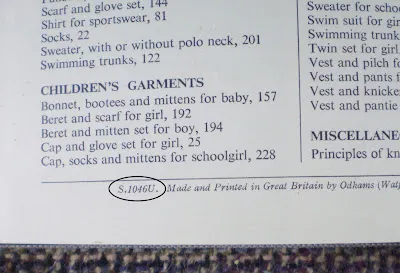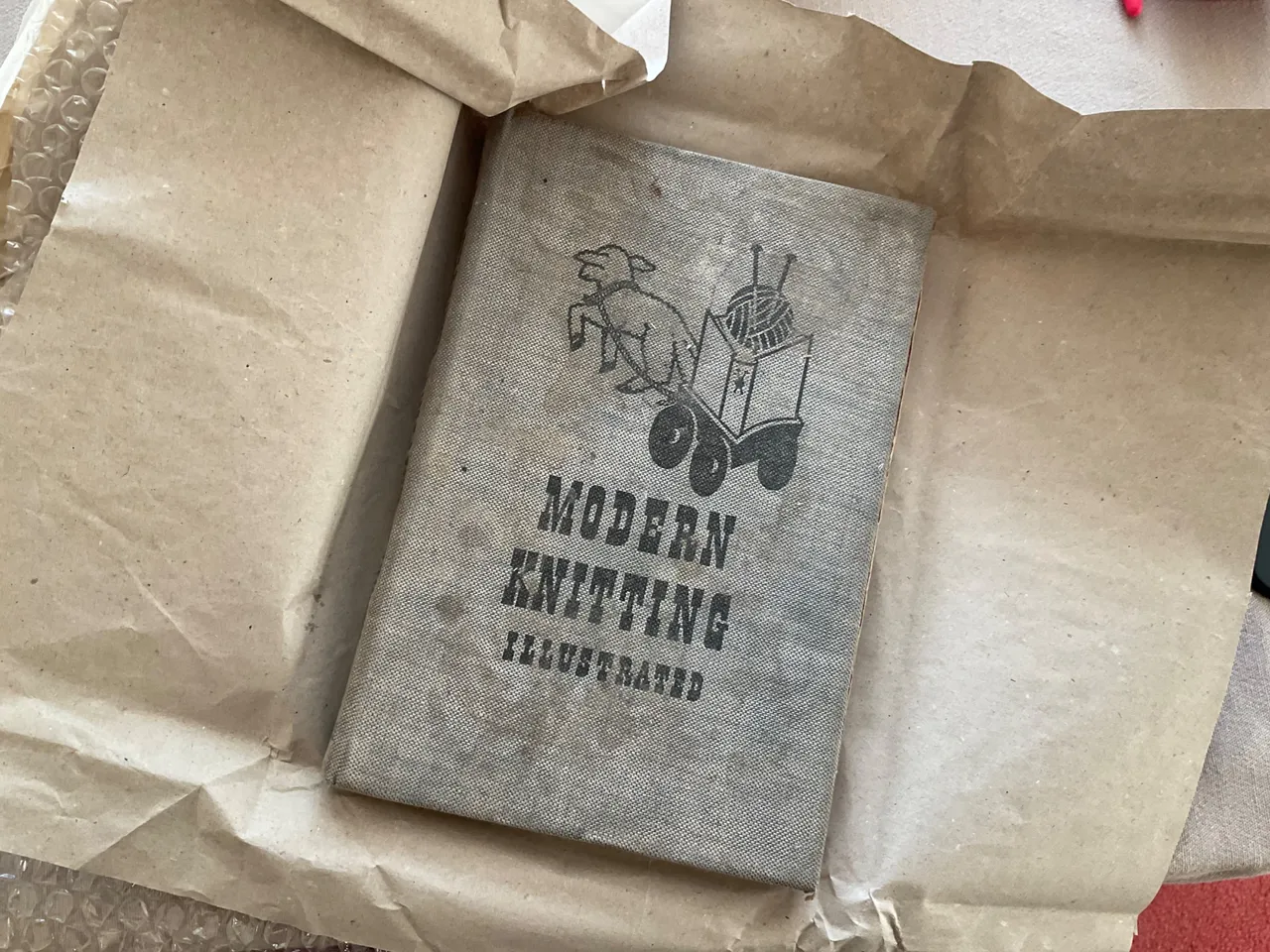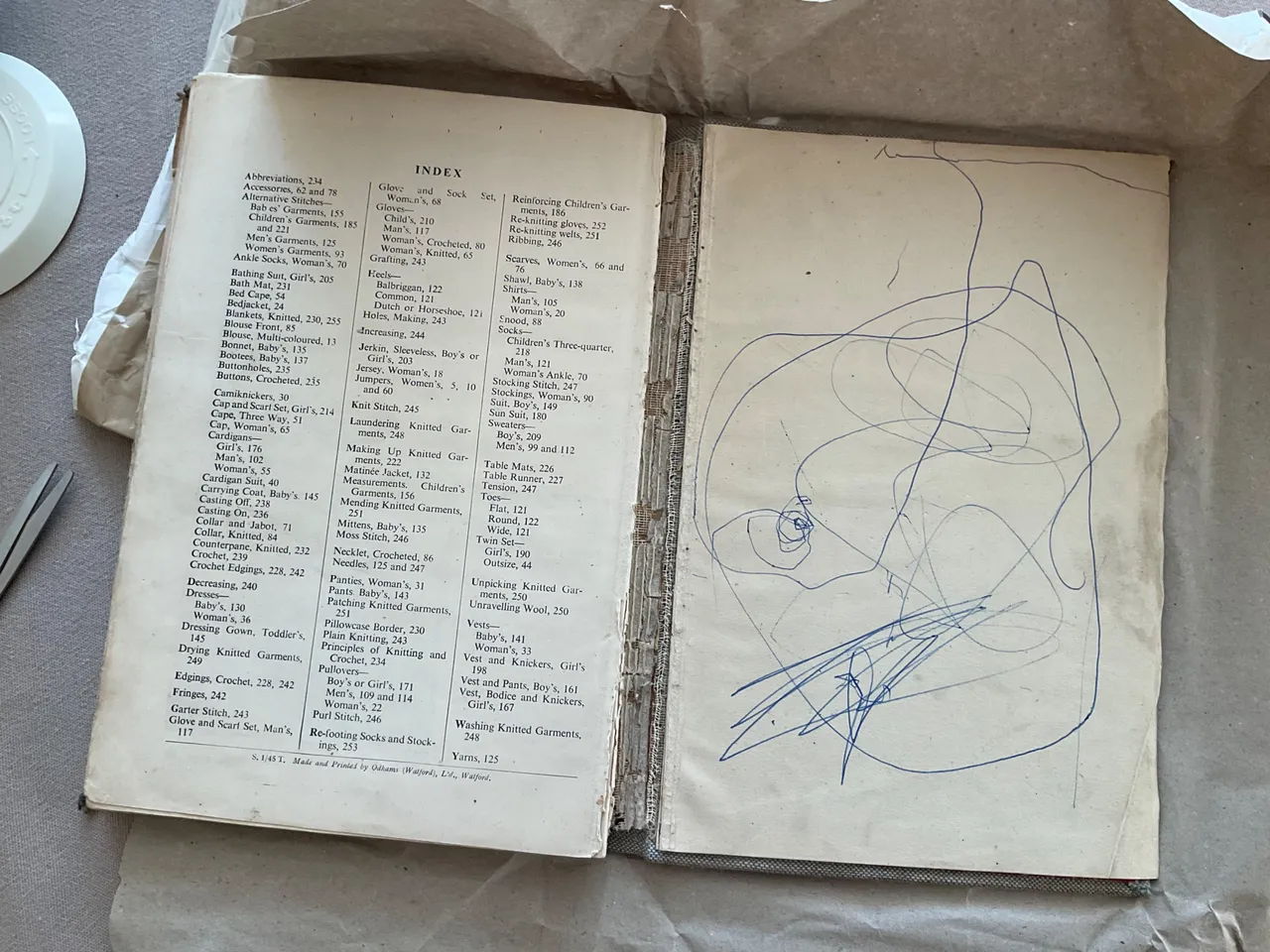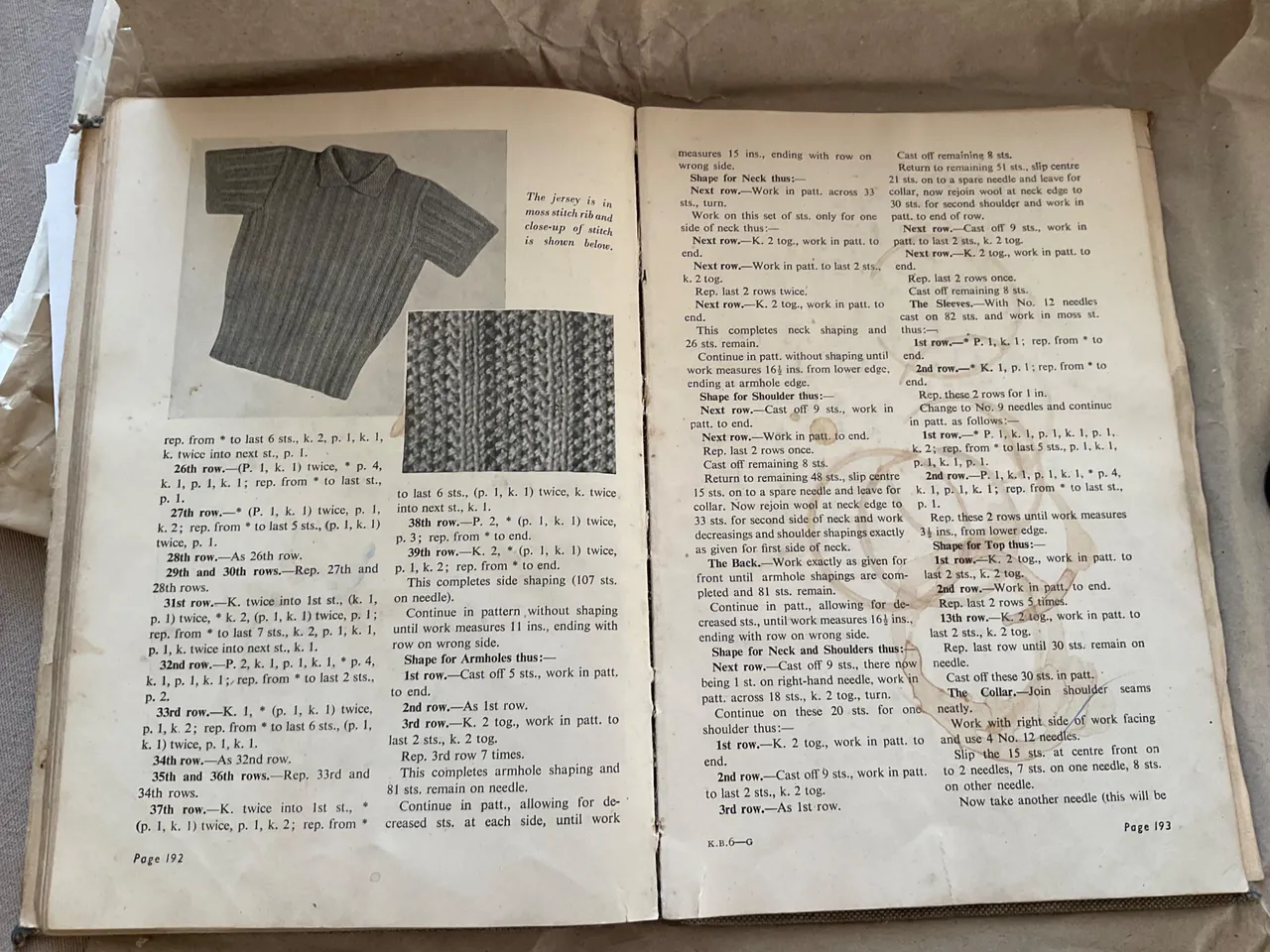
A little while ago, a channel that I follow on YouTube did a tour of their knitting library including some vintage books. I was listening along with half an ear until suddenly she showed a hardback book that I remembered from my childhood.
It was called Knitting for All - Illustrated and had a distinctive black and white woven cover with engraved lettering and motif on the front. I was sure this was the book I had seen knocking about our house as I was growing up. It was kept in strange places, like the bottom of my mum's wardrobe, but from time to time it would make an appearance.
These books were published during the 1940s and 50s, about one a year, all with very similar titles - Practical Knitting, Family Knitting and so on. They were written by two sisters-in-law, Margaret Murray and Jane Koster, who originally had a child modelling agency before putting together these books.
The one I grew up with seemed to date from around 1946, my mum would have been about fourteen then, so perhaps it was a Christmas or birthday present that year. She knitted the layettes for each new baby, I remember especially the little vests that crossed over at the front and were fastened with satin ribbons: six for each baby.
I don't know what happened to the book, probably discarded in one of the house moves. I've looked for a long time for that pattern for babies' vests, finally finding one in the facsimile of a book published in 1957. I was fascinated when I saw Knitting for All and set about looking for it myself.
Well, you know there are about twenty or so different books by the same two women and it's a deep rabbit hole to fall down. some are first editions and quite expensive, but every so often you will come across one on Abe books and a few other places.

Source I found this tip while researching - from an article about Margaret Murray and Jane Koster at Frankie's Knitted Stuff:
here's a tip for dating these books. If you look at the line of text giving the printer's details (this is often at the very end of the book) you will see a short series of letters and numbers. The numbers give the month and year of printing.
The book in the picture was printed in the tenth month of 1946 - October 1946.
Modern Knitting - Illustrated

Printed in January 1945, I chose this one as my first purchase because it looked the closest to the book I remembered. It has a similar black and white cover. But what attracted me is that this is not a perfect book. It's battered, smells like it has been kept in a cellar for a while, and has been well-used. All the pages are there and still bound, but the cover has come away from the pages on one end.

You can see the printing date at the bottom of the left hand page, and what drew me to this book: child scribbles!
I'm not sure our family copy would have had child scribbles: I don't recall ever seeing it opened. It was always there like a comfortable elderly relative - as a child you didn't take much notice but accepted their presence as part of your world.

The end papers are lovely. There are more end paper designs in the article linked above.

I liked the tea or coffee cup stains. Part of me is shocked but another part of me likes that this was a used book, open and around. Other patterns have some notes on them - measurements and quantities.
I have ordered a few more that I found on charity shop book sites. It was great to find out about the printing date, now I have an easy way to keep track of which ones I already have. I'm keeping this one in its packing - sugar paper, bubble wrap and a padded envelope.



